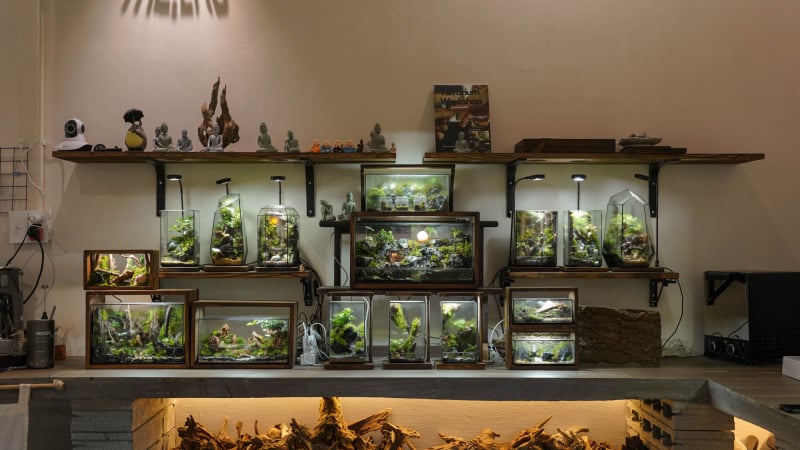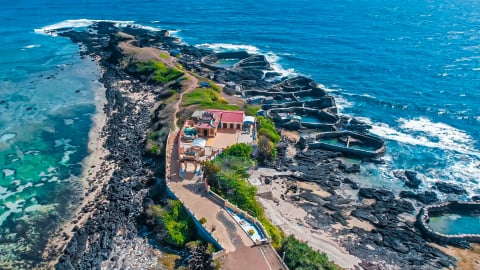In the early days of his re-election, President Donald Trump's desire to buy Greenland has attracted the attention of the whole world, seeing it as an absolute national security need. So what has made this remote Arctic island the center of attention, not only for a powerful president but also attracting thousands of tourists from all over the world?
Greenland, an autonomous country within the Kingdom of Denmark, boasts the world’s largest island, four times the size of France, but has a population of just under 60,000. This creates a vast, tranquil space where visitors can truly experience a rare sense of peace and serenity. With over 80% of its landmass covered in ice, Greenland is undoubtedly a “green land” in another sense – the green of the permanent ice and the blue of the vast ocean, creating landscapes that are second to none.

Icebergs loom like ghost ships
Greenland’s most iconic and famous symbols are its giant icebergs and glaciers. Formed from thousands of years of accumulation and compression of snow and ice, these icebergs are pure white or captivating turquoise, creating massive natural sculptures that stand out against the deep blue sea and sparkle under the Arctic sun.
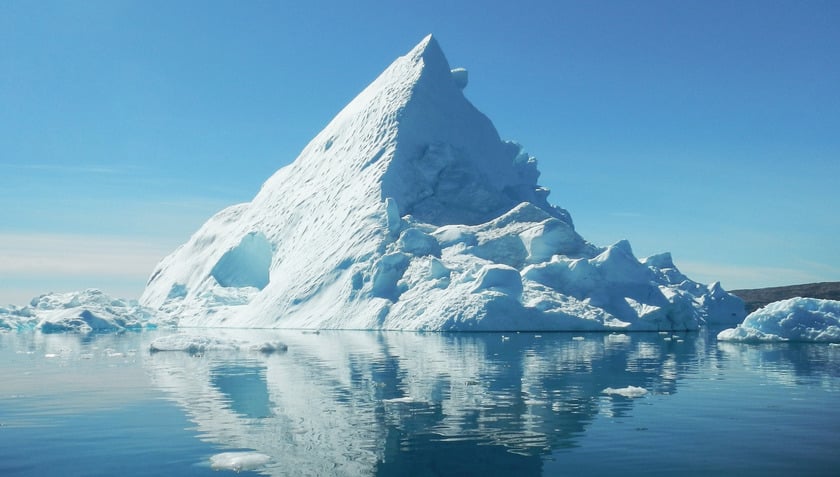
An autonomous territory of Denmark since the 19th century, Greenland is located near the North American continent, between the Atlantic and Arctic Oceans, and ice covers 80% of its area.
Visitors to Greenland cannot miss the opportunity to admire these "giants" from cruises weaving through the icy fjords. Captain David Karlsen of the Katak cruise once shared an unforgettable experience: "I was on a boat and saw icebergs break in two, the pieces falling back into the sea, creating a giant wave."
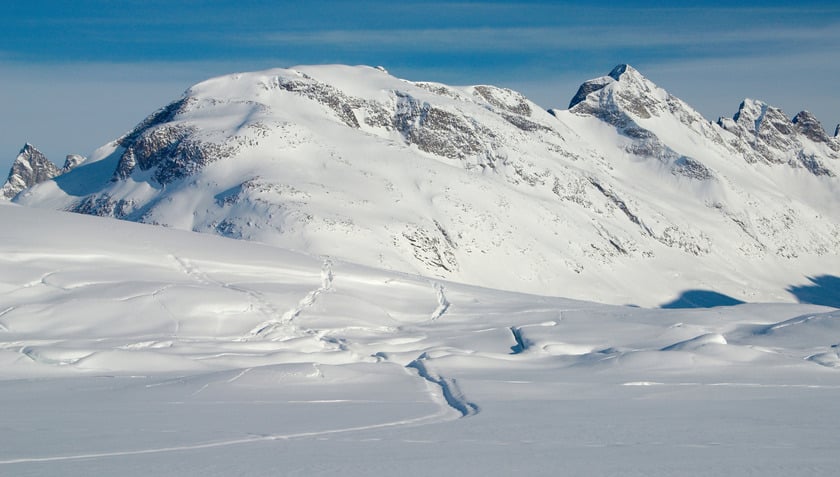
If you look far away, you will see icebergs the size of Manhattan skyscrapers protruding, drifting like ghost ships in Disko Bay.


The feeling of being overwhelmed by the majesty of nature, accompanied by the gentle sound of ice colliding, brings an experience that is both peaceful and magical. Although visitors can admire up close, they must comply with the regulations not to approach too close to ensure safety and environmental protection.
Colors between the blue sea of the ocean
If icebergs are a symbol of the majesty of nature, the colorful villages along the Greenland coast represent the warmth and vitality of human life. In contrast to the vast icy landscape, the small wooden houses here are painted in bright colors such as red, yellow, blue and white. This not only creates a beautiful aesthetic highlight but also has great practical value: the bright colors help people easily identify their homes in the long, snow-covered winter and the weak light of the Arctic.

If icebergs are a symbol of natural majesty, the colorful villages along the Greenland coast represent the warmth and vibrancy of human life.
This tradition stems from indigenous culture, where Greenlanders seek to create a sense of warmth and belonging in a harsh environment. Each house’s color is not only a personal choice, but also reflects different functions, such as administrative, hospital or residential, making it easier to distinguish in difficult weather conditions.
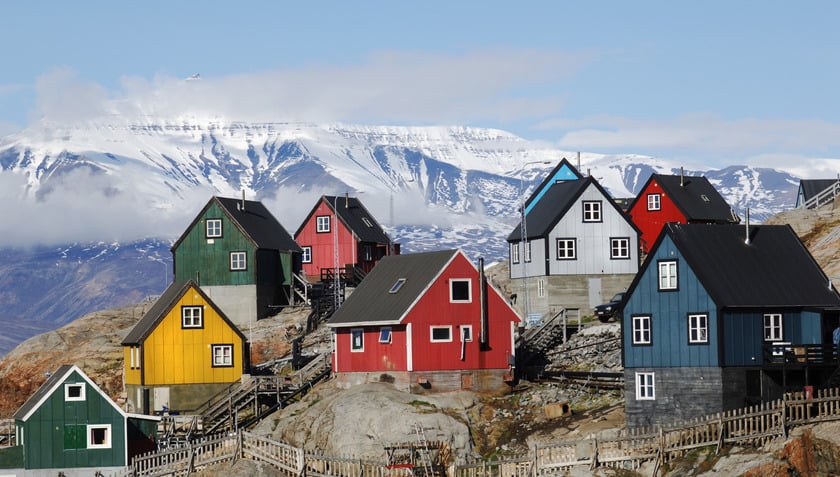
Bright colors help people easily identify their homes amid the long, snow-covered winter and the dim light of the Arctic.
Not only the capital Nuuk, other small villages such as Ilulissat, Sisimiut or Qaqortoq also possess their own charm, with picturesque scenery. Each village gives visitors the feeling of entering a fairy tale world, where people live in harmony with nature and enjoy the peace in the icy environment.

Northern Lights, magical band of light
Greenland boasts one of the best places in the world to see the Aurora Borealis, attracting thousands of visitors each year to admire this magical natural phenomenon. From September to April, when darkness falls over the Arctic sky, streaks of green, purple, pink and sometimes brilliant yellow light dance across the sky, creating a magical natural picture that leaves everyone in awe.
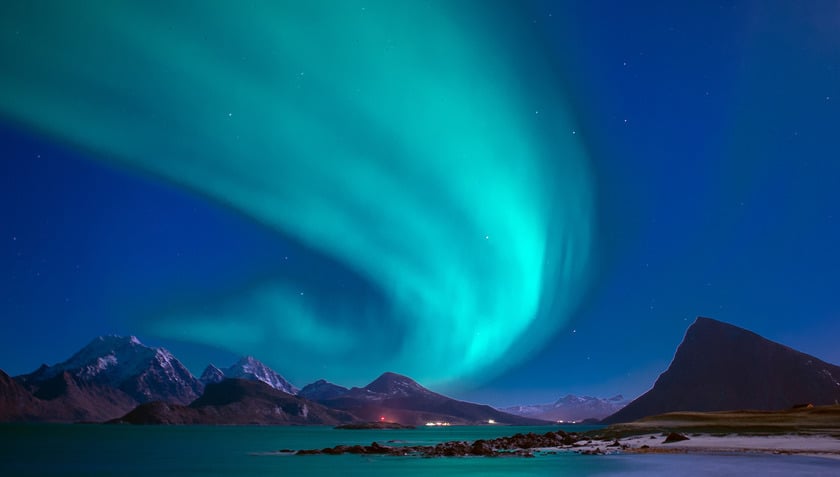
Thanks to little urban light pollution, Greenland is a dark canvas and the perfect stage for the Northern Lights to perform in the sky.
The Northern Lights occur when electrically charged particles from the sun collide with the Earth’s atmosphere, creating a magical, shimmering light. In Greenland, the cold climate, clear skies and low light pollution provide excellent opportunities to observe the phenomenon. Visitors often choose dark, moonless nights away from city lights for the best experience.
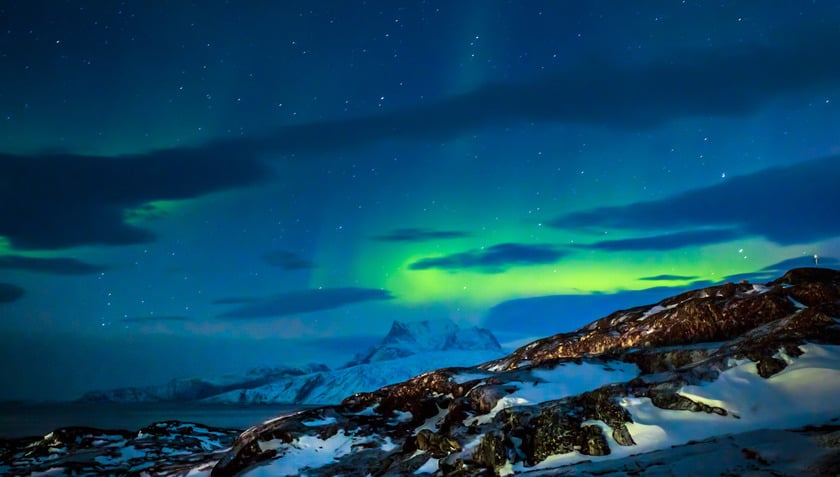
Visitors can also take part in igloo building experiences, hike the 160km Arctic Circle Trail and are required to carry guns to fire warning shots in case of encountering polar bears.
Inuit culture, enduring life amidst harsh conditions
Greenland’s soul lies in its deep and enduring Inuit culture. The Inuit, the indigenous inhabitants of the Arctic, have survived and thrived on this harsh island for thousands of years, adapting remarkably to their unique environment. Their culture is a unique blend of tradition and modernity: they still dry fish outdoors, but watch cable TV and listen to radio indoors. Children are taught Western curriculums in school while also being taught traditional survival skills, demonstrating a strong sense of identity.
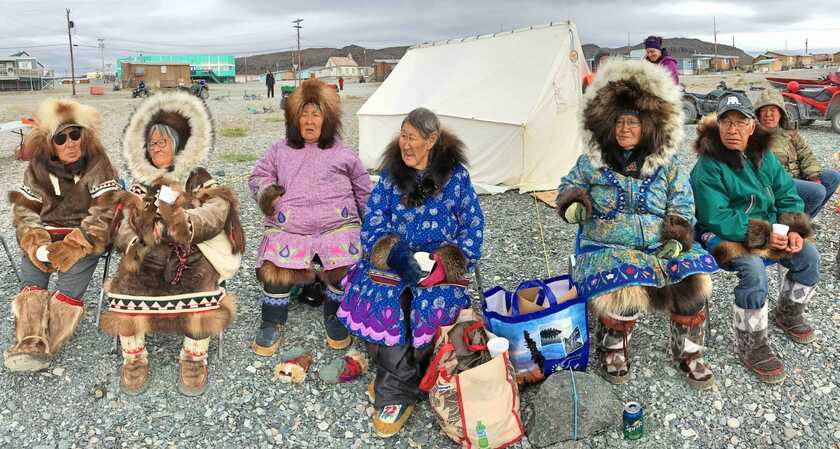
Greenland is not only attractive for its spectacular natural scenery but also for the unique culture of the Inuit people.

The Inuit people have developed a way of life in harmony with nature, making the most of resources from the sea and ice to survive in harsh environments.
Traditional igloo houses, dog sleds and animal skin clothing are hallmarks of Inuit culture. Visitors to Greenland can experience Inuit life, enjoy traditional food and participate in unique cultural activities, gaining insight into a resilient culture in the heart of the Arctic.

In addition to hands-on activities, visitors can also listen to colorful Inuit myths, such as the story of Sedna – the goddess of the sea.
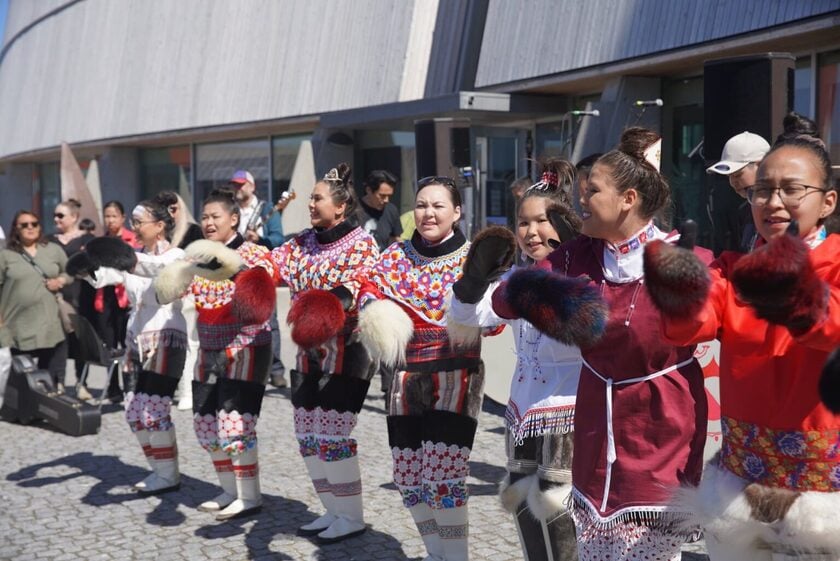
Greenland is not just an icy island but a treasure trove of nature and culture, a destination where every corner holds stories and timeless beauty, waiting for visitors to discover and experience. That is also the reason why it has a special appeal, beyond the vision of a mere tourist destination, becoming a strategic and potential land in the eyes of many world leaders.







